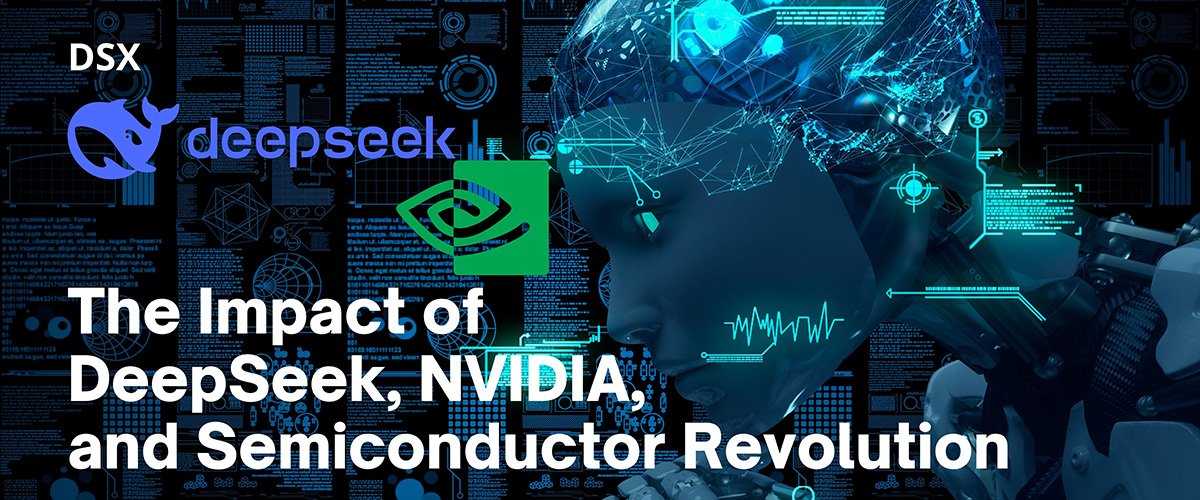The Impact of DeepSeek, NVIDIA, and Semiconductor Revolution

DeepSeek AI is a forward-thinking artificial intelligence company dedicated to advancing the development of Artificial General Intelligence (AGI), aiming to create systems capable of human-like reasoning and problem-solving across diverse domains. By focusing on cutting-edge research in machine learning, natural language processing, and multimodal AI, the company is rapidly expanding its influence. Its growth is fueled by strategic collaborations with academic institutions, partnerships with industry leaders, and significant investments, enabling breakthroughs in sectors like healthcare, finance, and autonomous technologies. As demand for sophisticated AI solutions surges, DeepSeek AI’s scalable platforms and commitment to ethical innovation position it as a rising contender in the global AI landscape.
The rapid evolution of DeepSeek's artificial intelligence technologies is triggering significant shifts in the printed circuit board (PCB) sector, creating both challenges and opportunities for manufacturers navigating this transformed landscape.
DeepSeek: The Game-Changer in AI and Data Analysis
DeepSeek is a revolutionary leap in AI capabilities that offers unmatched data analysis that helps organizations make faster and better decisions. By integrating cutting-edge machine learning algorithms, DeepSeek processes complex datasets in seconds, revolutionizing industries from telecommunications to healthcare. Its quick adoption has increased demand for advanced hardware, such as GPUs and other semiconductor components necessary for AI workloads.
The Efficiency Paradox – AI Optimization vs. Hardware Demand
DeepSeek's breakthrough in training cost efficiency – achieving competitive AI models for just \$6 million – is reducing dependency on cutting-edge PCB technologies. This optimization enables comparable performance on less sophisticated hardware through:
- Model distillation techniques that compress AI capabilities into smaller footprints
- Algorithmic improvements requiring fewer computational resources
- Hardware-software co-design minimizing reliance on ultra-high-density interconnect (HDI) boards
The downstream effect includes a projected 6-9% price reduction for standard multilayer PCBs as AI infrastructure spending rebalances toward software optimization.
Emerging Growth Frontiers:
While traditional AI server markets contract, new PCB applications are emerging:
Edge AI Deployment:
Compact, energy-efficient PCBs are seeing surging demand for IoT devices implementing DeepSeek's lightweight models, particularly in:
- Smart manufacturing sensors (28% projected CAGR through 2026)
- Autonomous agricultural equipment
- Real-time healthcare monitoring systems
Advanced Packaging Requirements:
Next-generation AI chips optimized for DeepSeek architectures require:
- Substrate-like PCBs with <30μm line spacing
- Embedded passive components for power integrity
- 3D interposers supporting chiplet integration
Industrial Automation:
Reinforcement learning applications are driving needs for:
- Self-reconfiguring PCB layouts in robotic systems
- Vibration-resistant designs for mobile automation platforms
- Multi-physics simulation compatible board architectures
Market Adaptation Strategies:
PCB manufacturers are implementing three core strategies to survive the transition:
Strategy | Implementation | Market Focus |
Thermal Management Innovation | Direct liquid cooling embedded traces | High-power AI accelerators |
Hybrid Design Development | HDI-lite boards with selective complexity | Cost-sensitive edge devices |
Material Science Investment | Low-Dk/Df substrates for high-frequency AI | Automotive radar systems |
This strategic pivot comes as the market shows divergent growth patterns – overall PCB demand contracted 5.7% in Q1 2024, while HDI variants grew 8.2% year-over-year.
Manufacturers combining material science expertise with AI co-design capabilities appear best positioned to capitalize on this paradigm shift. The ultimate trajectory will depend on how quickly PCB developers can align their R&D pipelines with DeepSeek's evolving technological requirements.
 The Evolution of PCB Technolog
The Evolution of PCB Technolog
 Top 6 PCB Industry Trends Shap
Top 6 PCB Industry Trends Shap
 Sustainable Materials and Manu
Sustainable Materials and Manu
 The Impact of DeepSeek, NVIDIA
The Impact of DeepSeek, NVIDIA
